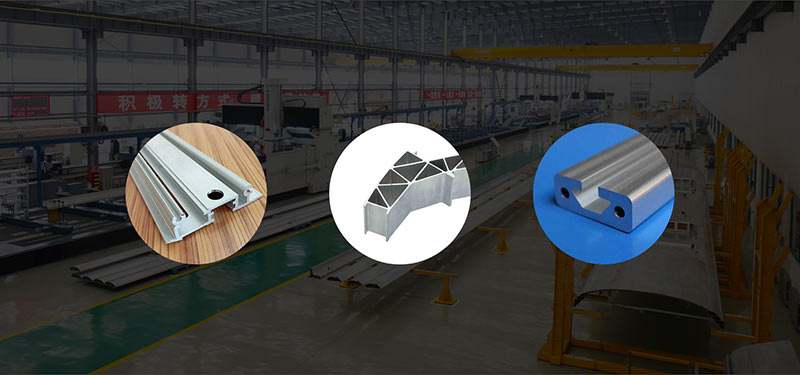
86 17344894490
service@chalcoaluminum.com
- Aluminum Forgings for Rail Vehicles
- Aluminum plate sheet for rail Rail vehicles
- Aluminum Profile for Rail Vehicles
Aluminum alloy extruded profiles for rail
s early as the 1950s, developed countries such as Europe, America and Japan began to use aluminum profile to manufacture railway vehicles. At present, aluminum alloy materials have been widely used in domestic high-speed railway train bodies. The development of aluminum profile car body in China began in the 1990s. At present, three of the four types of EMUs used in railway passenger dedicated line are made of aluminum alloy. This reflects the advantages of aluminum profile in the application of rail transit car body. Realize lightweight, energy saving and consumption reduction. Aluminum alloy extruded profiles for rail is the best material for lightweight car body. Because of its low density, excellent specific strength and excellent plastic toughness, aluminum profile can not only meet the safety requirements of high-speed railway, but also greatly reduce the dead weight of the train. Generally speaking, the aluminum alloy used in a high-speed railway carriage is about 9 tons, which is 30% - 50% less than that of all steel. Moreover, for every 10% reduction in weight, the fuel can be saved by 8%, and the effect of energy saving and consumption reduction is obvious.

Aluminum alloy extruded profiles for rail
Aluminum alloy extruded profiles for rail is easy to process and form, and the manufacturing cycle is short. Aluminum alloy has excellent processing and molding performance and module welding performance. It can produce large section, special-shaped, thin-walled and hollow profiles up to more than 30 meters in a single extrusion, and has good performance. In the process of car body manufacturing, aluminum profiles only need blanking, assembly and large robot assembly and welding. Compared with the production of plate steel car body, it has the advantages of simple process, time and material saving, low cost and short cycle.
Aluminum alloy extruded profiles for rail has excellent corrosion resistance and long service life. A dense oxide film is easy to form on the surface of aluminum alloy, which has excellent corrosion resistance in atmospheric environment. If anodizing, electrophoresis, spraying and other surface treatments are adopted, the corrosion resistance of aluminum profile can be further improved, which is conducive to prolonging the service life of car body. Simple maintenance and easy recycling. Aluminum alloy car body is easy to replace without rust removal. It is suitable for various surface treatments and easy to maintain. The maintenance cost is only 52% of that of steel car body. It is easy to recycle and save resources. The recycling value is about 4.8 times that of steel.
Aluminum alloy extruded profiles for rail are mostly wide, special-shaped, thin-walled and hollow profiles, which are prone to distortion, deformation and other defects during heat treatment. At present, most enterprises use on-line air-cooled quenching equipment. For car body profiles, the cooling intensity is low and the cooling uniformity is not enough, resulting in low or uneven performance of profiles; For some car body profiles with large wall thickness difference, the cooling intensity at the thick wall is smaller, resulting in coarse grains in the center and enhanced structural heterogeneity. Aiming at the high efficiency and uniformity of quenching and the complexity of profile section, an automatic quenching equipment integrating air cooling, air mist cooling and water cooling is developed, which can independently control the cooling intensity of each part, which plays a great role in further improving the performance of profile.
For some specific vehicle body components, such as cross beam and traction beam, it is necessary to meet high fatigue and stress corrosion performance. To improve the fatigue performance, not only the advanced melting and casting process should be adopted to ensure that there are no metallurgical defects in the material, but also the coarse brittle crystalline phase should be reduced through multistage homogenization treatment to reduce the crack sensitivity of the material; For the stress corrosion performance, it is also necessary to develop new aging processes, such as graded aging and non isothermal aging, so as to improve the characteristics of grain boundary on the premise of ensuring excellent strong plasticity, make the second phase of grain boundary intermittently distributed and the precipitation free zone (PFZ) narrower.

Free offer of products, welcome to consult at any time, we will give the first reply.Our Email:
